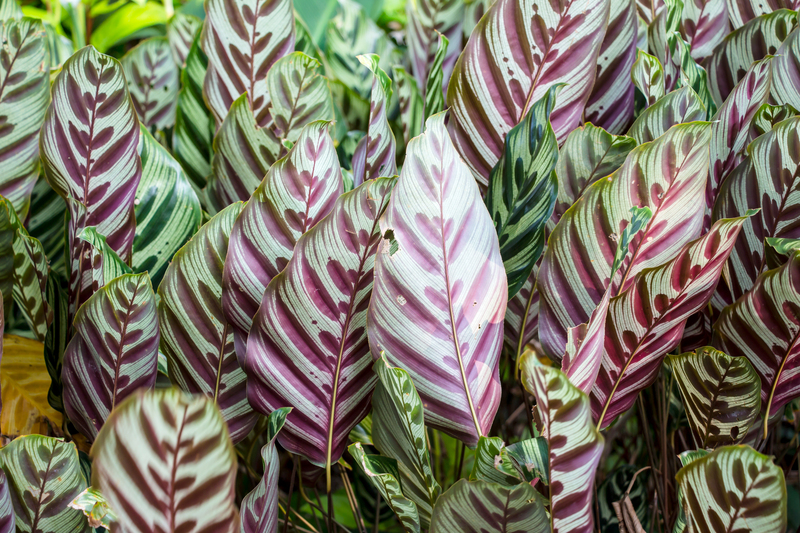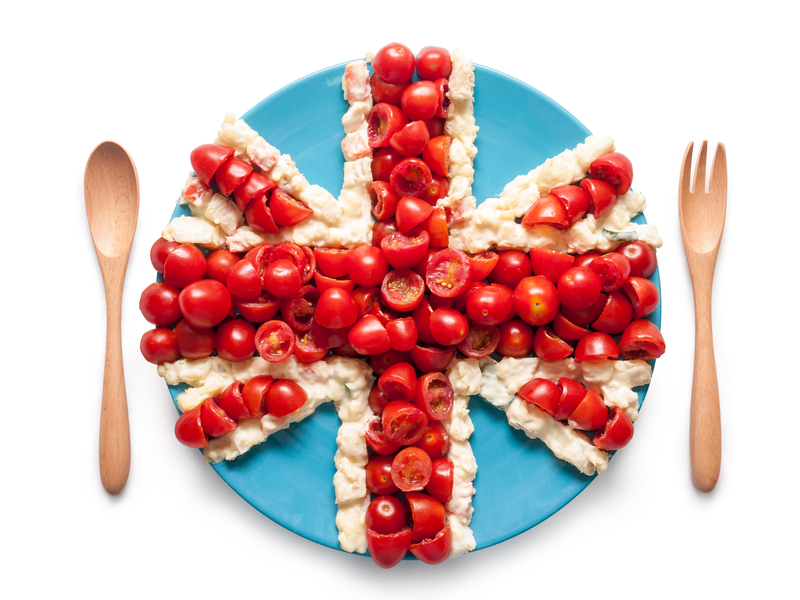Transform Your Garden with Vertical Planting Strategies
Posted on 30/08/2025
Transform Your Garden with Vertical Planting Strategies
Do you dream of a lush, vibrant garden but worry about limited space or lack of sunlight? *Vertical planting strategies* offer a creative, space-efficient solution to nurturing a thriving garden anywhere - be it a modest balcony, a small backyard, or even a sun-drenched wall.
In this comprehensive guide, we'll explore the transformative power of vertical gardening, providing actionable tips and expert insights. If you're ready to turn walls, fences, and corners into flourishing green spaces, read on to discover how vertical planting can completely revitalize your garden experience!
What is Vertical Planting?
Vertical planting, also known as vertical gardening or wall gardening, is the practice of cultivating plants upward on vertical surfaces instead of spreading horizontally over the ground. This approach utilizes structures such as living walls, trellises, hanging baskets, and modular planters, making it possible to maximize limited space and introduce greenery to otherwise unused areas.
Key Benefits of Vertical Gardening
- Space Efficiency: Perfect for urban environments, patios, balconies, and compact backyards.
- Improved Aesthetics: Adds texture, color, and lush beauty to plain walls and fences.
- Better Plant Health: Increases air circulation, reducing risks of pests and diseases.
- Access to Sunlight: Enables more uniform sunlight exposure for your plants.
- Easier Maintenance: Reduces back strain and simplifies weeding and watering.
- Environmental Benefits: Vertical gardens help insulate buildings, filter pollutants, and support pollinators.

Popular Vertical Planting Strategies for Any Space
Transforming your garden with vertical planting involves creative design and selection of appropriate support systems. Here are some popular strategies to consider:
1. Living Walls and Green Walls
Living walls are visually striking vertical planters that consist of interconnected pockets or planters mounted on walls or frames. They are ideal for both indoor and outdoor settings and can dramatically change the visual appeal of an area.
- Benefits: Provides insulation, enhances air quality, and creates natural artwork.
- Plant Choices: Ferns, succulents, mosses, herbs, and flowering plants.
- Pro Tip: Use a drip irrigation system to ensure even watering.
2. Trellises, Arbors, and Pergolas
_Trellises_, *arbors*, and pergolas are functional supports that encourage plants to grow vertically and create shady, green enclaves. Climbers like beans, clematis, and roses thrive on these structures.
- Advantages: Increases privacy, creates visual interest, and supports vines and climbers.
- Applications: Framing walkways, defining garden rooms, or providing leafy arches.
3. Hanging Baskets and Pots
_Hanging baskets and modular pots_ introduce elevation and diversity by displaying flowering plants or cascading greenery from above.
- Why Choose: Flexibility and portability are ideal for renters and small spaces.
- Suitable Plants: Petunias, trailing ivy, strawberries, and cherry tomatoes.
4. Vertical Planter Towers
*Planter towers* utilize stacked pots or tube systems to cultivate multiple layers of plants vertically. These towers are perfect for herbs, strawberries, or salad greens as they maximize root space.
- Main Benefits: Compact design, easy harvesting, ideal for patios.
- DIY Option: Recycled plastic bottles and large PVC pipes can be upcycled into plant towers.
5. Pallet Gardens
Upcycled wooden pallets make excellent frameworks for vertical vegetable gardens or vibrant flower displays. With additional landscape fabric, they can hold potting mix securely.
- Best For: Small edibles, succulents, annuals, and even leafy greens.
- Pro Tip: Secure to a fence or wall using heavy-duty brackets.
Choosing the Right Plants for Vertical Gardens
Transformation starts with appropriate plant selection. Choose plants based on sunlight, water, and maintenance needs.
Top Plants for Vertical Planting Strategies
- Herbs: Basil, mint, parsley, thyme, and oregano thrive in vertical planters.
- Vegetables: Leafy greens, lettuce, kale, spinach, and cherry tomatoes.
- Succulents: Low-maintenance and visually striking; ideal for sunny walls.
- Ornamentals: Petunias, pansies, nasturtiums, violas, and geraniums.
- Climbers and Vines: Clematis, jasmine, passionflower, sweet peas, and beans.
Tips to Ensure Plant Success
- Group by Needs: Install plants with similar water and sunlight requirements together.
- Rotate Regularly: Ensure even light and prevent overcrowding.
- Support Growth: Attach plant ties or gently train vines as needed.
How to Maximize Space with Vertical Gardening Techniques
To transform your outdoor or indoor garden, it's crucial to maximize every inch. Here's how you can use vertical planting techniques to turn constraints into opportunities:
Evaluate Your Space
- Walls and Fences: Install vertical grow systems or green walls on fences and exterior building walls.
- Balconies: Hanging planters, railing-mounted baskets, and compact towers are ideal.
- Corners: Corner shelving and spiral pot stands utilize awkward spots.
Design Techniques
- Layering: Use a variety of heights and depths to create a lush, multi-dimensional effect.
- Patterns: Arrange colors and foliage in geometric or flowing patterns for dramatic impact.
- Portable Systems: Opt for movable planters to chase sunlight or adapt to different seasons.
Optimize Plant Arrangement
- Sunlight: Place sun-loving plants at the top and shade-tolerant ones beneath.
- Irrigation: Utilize gravity-fed watering, setting thirstiest plants lower down where runoff collects.
- Accessibility: Arrange edible crops and herbs where you can easily harvest them.
Essential Tools and Materials for Vertical Gardens
Establishing a successful vertical garden is easy with the right tools and materials:
- Vertical Planters: Modular panels, wall pockets, or stackable towers.
- Mounting Hardware: Brackets, hooks, screws, and anchors tailored to your surface.
- Potting Mix: Lightweight, water-retaining soil mixes designed for containers.
- Drip Irrigation Kits: Automate watering for consistent moisture.
- Fertilizer: Use slow-release or liquid fertilizer for regular feeding.
DIY Vertical Garden Projects
- Pallet Wall: Line the back and sides of a pallet with landscape fabric, fill with soil, and plant your favorite herbs and flowers.
- Shoe Organizer Planter: Hang a fabric shoe organizer on a fence, fill each pocket with soil, and add small veggie starts or annuals.
- Recycled Bottle Towers: Stack plastic bottles with necks downward and plant leafy greens from side openings.
Common Challenges and How to Overcome Them
While vertical planting strategies offer numerous benefits, some challenges may arise. Here's how to address common issues:
- Watering: Vertical gardens dry out faster. Install a drip irrigation or self-watering system to maintain consistent moisture.
- Weight: Heavier planters can damage walls. Use lightweight structures and verify supports before installation.
- Wind Exposure: Secure frameworks tightly and choose sturdy plants for windy locations.
- Pest Management: Inspect regularly and use organic pest solutions as needed.
Environmental and Health Benefits of Vertical Planting
Adopting vertical gardening techniques is not just about aesthetics. It brings real environmental and lifestyle improvements:
- Urban Greening: More greenery supports pollinators and reduces heat islands.
- Improved Air Quality: Vertical gardens filter airborne toxins, releasing oxygen into your environment.
- Thermal Regulation: Plants insulate walls, reducing heating and cooling costs.
- Mental Wellness: Green living spaces boost mood, creativity, and overall wellbeing.
Frequently Asked Questions About Vertical Planting
-
What plants grow best using vertical planting strategies?
Leafy greens, herbs, compact vegetables, flowering annuals, succulents, and climbing plants are most successful. -
How often should I water a vertical garden?
It depends on your climate and plant selection, but vertical gardens generally need more frequent watering. Incorporate a drip irrigation system for best results. -
Do vertical gardens attract pests?
Good circulation reduces risks, but monitor regularly and address pests promptly with organic controls. -
Is vertical gardening suitable for beginners?
Absolutely! Many modular and DIY systems are easy to install and maintain, making vertical gardening accessible for new gardeners.
Creative Ways to Integrate Vertical Gardens
- Kitchen Herb Wall: Grow fresh herbs on a sunlit kitchen wall for easy access while cooking.
- Outdoor Privacy Screens: Use climbers or dense living walls to create private outdoor nooks.
- Breezeway and Balcony Gardens: Turn narrow spaces into productive and decorative plant havens.
- Workspaces and Offices: Add oxygen and reduce stress with indoor living walls.

Step-by-Step Guide to Starting Your Own Vertical Garden
- Choose Your Location: Assess sun exposure, wind, and available vertical surfaces.
- Select a Structure: Pick the best system - living wall kits, trellises, or DIY recycled containers.
- Plan Plant Selection: Match plants to light, water, and climate conditions.
- Install and Prepare: Secure your framework, fill with potting mix, and set up an irrigation method.
- Plant and Maintain: Install seedlings, water regularly, fertilize as needed, and prune for health and appearance.
Maintenance Tips for Thriving Vertical Gardens
- Water consistently: Vertical gardens can dry rapidly, so monitor soil moisture.
- Feed responsibly: Use diluted liquid fertilizer to avoid root burn.
- Prune and deadhead: Remove faded flowers and excess growth for improved airflow and appearance.
- Rotate plants: Swap seasonal plants and adjust for sun patterns.
Conclusion: Elevate Your Green Space with Vertical Planting Strategies
Whether you're a city dweller with a tiny balcony or a homeowner wanting to revamp a bland fence, vertical gardening offers endless possibilities. By harnessing vertical planting strategies, you can maximize your growing space, enhance the beauty of your environment, and enjoy the many health and ecological benefits that come with a lush, green garden.
Start small or dream big - the transformation begins with your first vertical planter. Embrace the upward growth, unlock your garden's full potential, and let your living walls speak volumes!
If you've enjoyed this guide, explore more on creative gardening techniques, sustainable garden design, and tips for a flourishing home ecosystem right here!

